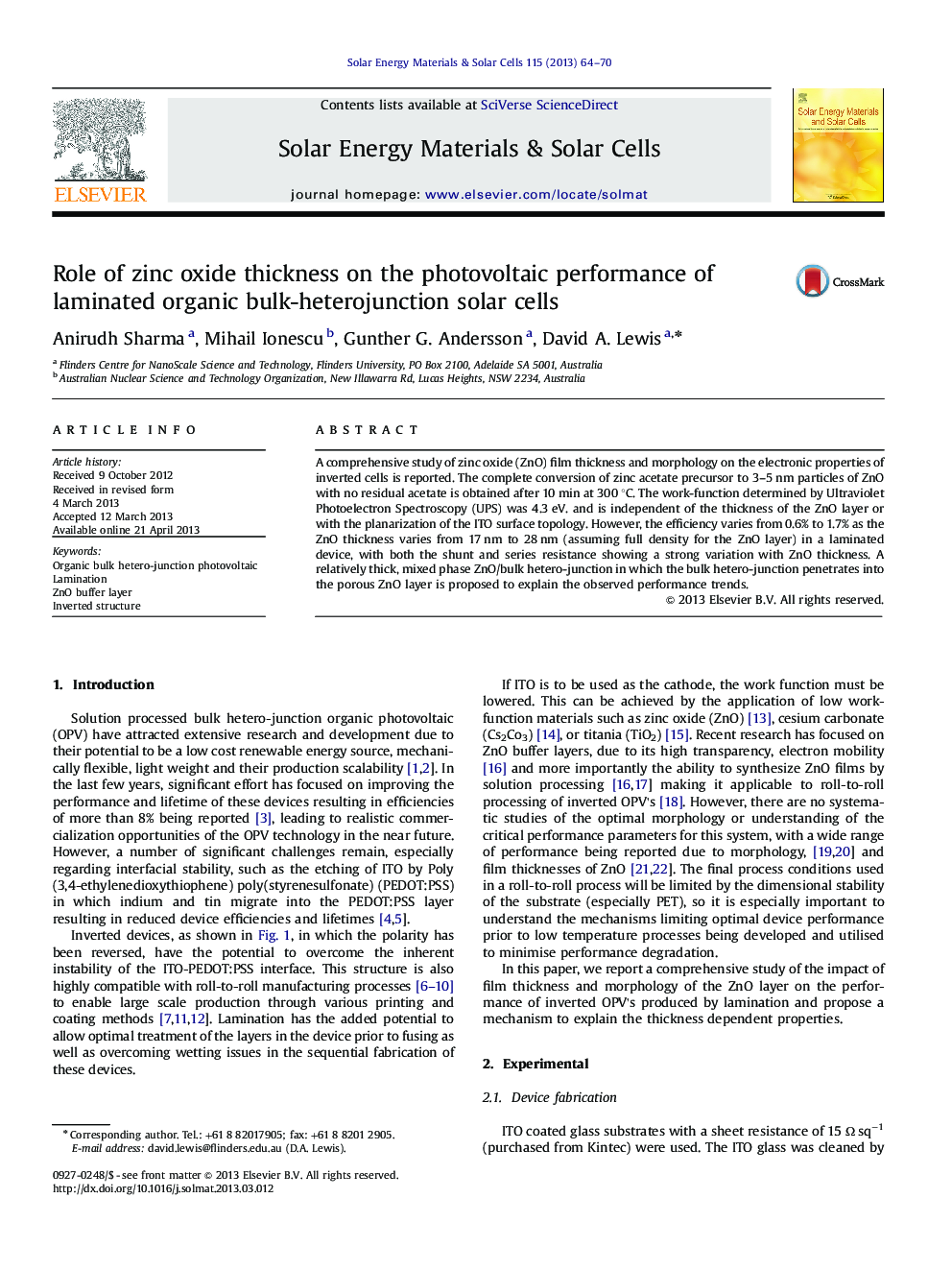| Article ID | Journal | Published Year | Pages | File Type |
|---|---|---|---|---|
| 78233 | Solar Energy Materials and Solar Cells | 2013 | 7 Pages |
•Detailed study of morphology, surface chemistry and work function of ZnO layers.•ZnO layer comprised of particles, leaves a porous structure independent of thickness.•Work function and surface chemistry are the same and independent of thickness.•Efficiencies range from 0.6% to 1.7% in laminated OPV's as ZnO thickness increases.•BHJ interpenetrates into the porous ZnO layer, resulting in electrical shorts.
A comprehensive study of zinc oxide (ZnO) film thickness and morphology on the electronic properties of inverted cells is reported. The complete conversion of zinc acetate precursor to 3–5 nm particles of ZnO with no residual acetate is obtained after 10 min at 300 °C. The work-function determined by Ultraviolet Photoelectron Spectroscopy (UPS) was 4.3 eV. and is independent of the thickness of the ZnO layer or with the planarization of the ITO surface topology. However, the efficiency varies from 0.6% to 1.7% as the ZnO thickness varies from 17 nm to 28 nm (assuming full density for the ZnO layer) in a laminated device, with both the shunt and series resistance showing a strong variation with ZnO thickness. A relatively thick, mixed phase ZnO/bulk hetero-junction in which the bulk hetero-junction penetrates into the porous ZnO layer is proposed to explain the observed performance trends.
Graphical abstractFigure optionsDownload full-size imageDownload as PowerPoint slide
